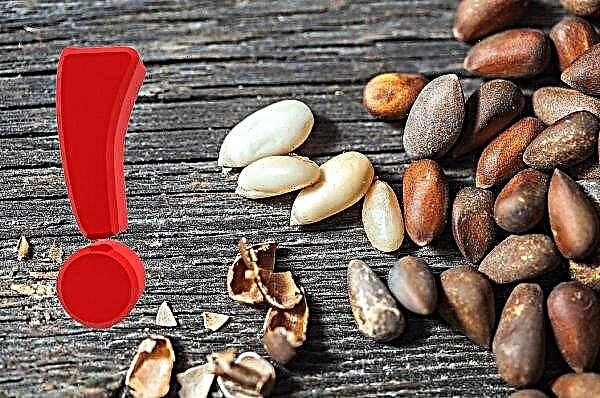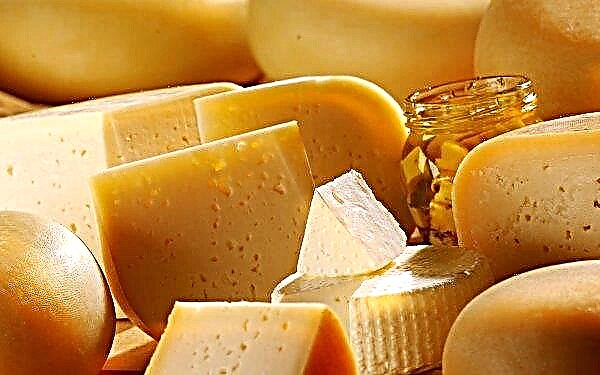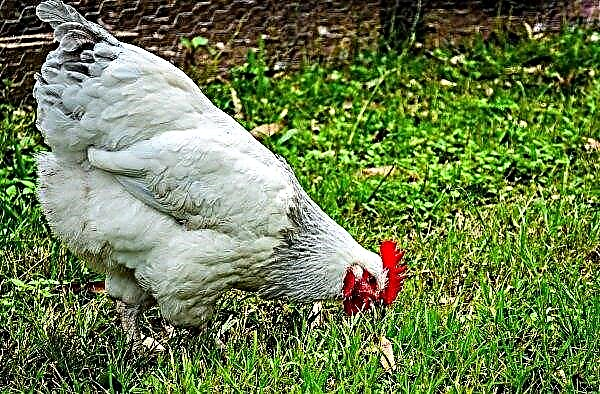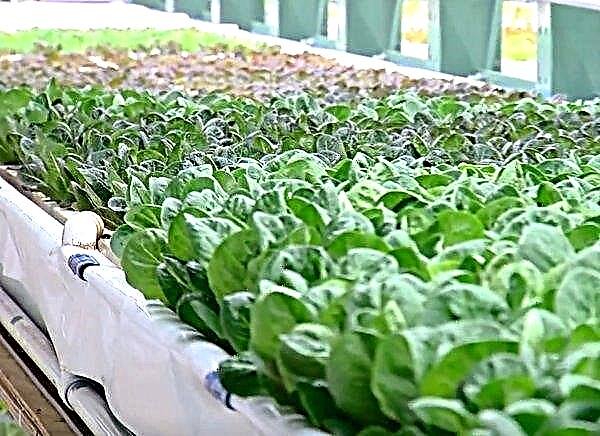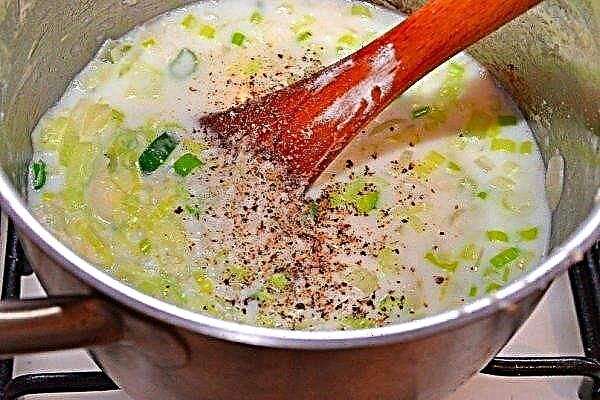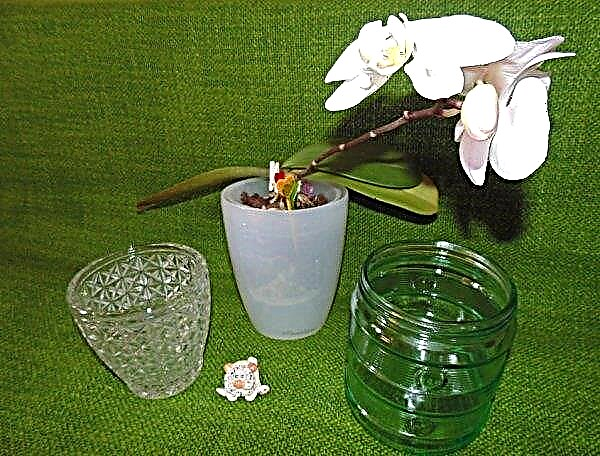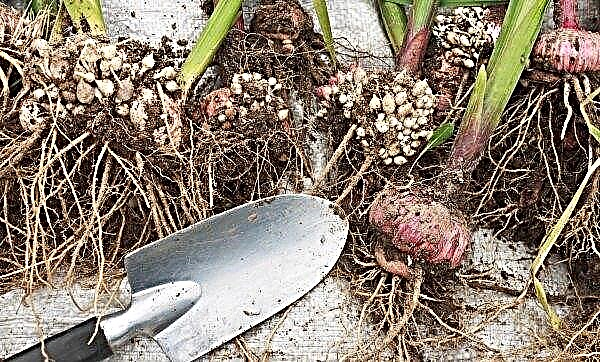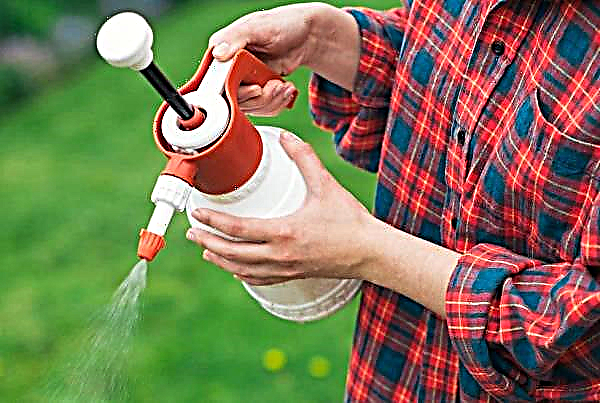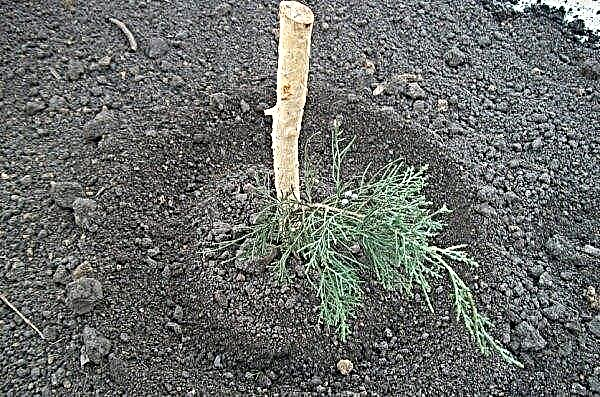Kalateya Varshevich is one of the most popular decorative indoor plants, however, it is quite difficult for beginner growers to grow it at home. The culture is rather capricious in leaving and requires certain living conditions. What are the features of growing a flower and what are the methods for its propagation - let's figure it out.
Description and characteristics of the plant
Kalateya Varshevich is a decorative and deciduous perennial culture of the Marantov family. Its natural habitat is the tropical regions of South and Central America. The plant belongs to the category of rhizome perennials with shortened branches and long leafy plates. A characteristic feature of kalatea is its egg-shaped leaves with a curved terry surface and embossed veins, connected into small sockets and attached to short petioles.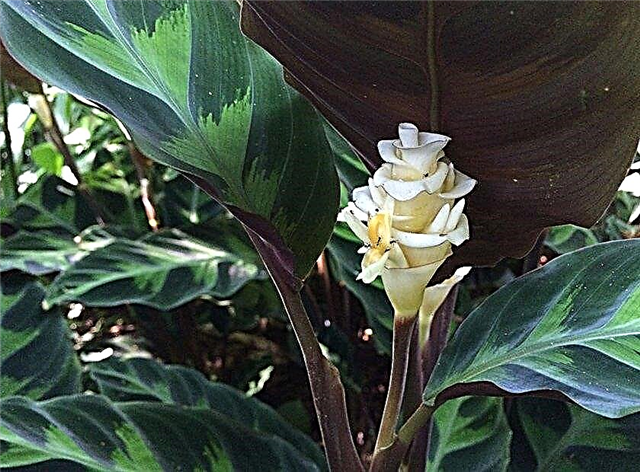 The top of the foliage has a greenish-silver color with pronounced dark green wide stripes or spots. The lower part of the leaf plate has a purple color and resembles peacock feathers. During flowering, in May - July, rather large flowers of beige or snow-white color are formed on the plant. They are formed in spikelet inflorescences and are located on short peduncles of raspberry blossom.
The top of the foliage has a greenish-silver color with pronounced dark green wide stripes or spots. The lower part of the leaf plate has a purple color and resembles peacock feathers. During flowering, in May - July, rather large flowers of beige or snow-white color are formed on the plant. They are formed in spikelet inflorescences and are located on short peduncles of raspberry blossom.
Did you know? Calathea has an interesting property: at night, its leaves are twisted into small tubes and rise, demonstrating the original color of the lower part of the leaf plate. Due to this quality, the flower is often called the “prayer book”.
Conditions for successful growing at home
At home growing calathea requires close attention and quality care. In natural conditions, it grows on the shores of lakes, rivers and reservoirs, therefore, prefers similar conditions in the apartment.
Location and Lighting
For a tropical beauty, it is recommended to choose a well-lit place, but protect from direct sunlight, which can lead to burns of leaves. The plant tolerates partial shade well, however, it is not worth placing it in a too dark corner of the apartment, as it can lose the beautiful color of the leaves. An excellent location of the flower pot will be window sills in the northern part of the apartment. You can also set the tank on the west or south side, while providing perennial penumbra.
Temperature mode
Calathea is a heat-loving culture, and even in winter it requires maintaining a stable air temperature not lower than + 16 ° С. Negatively, the flower refers to sharp temperature drops, which can provoke wilting of leaves and loss of elasticity of petioles. Cold drafts are considered fatal to the plant.
Air humidity
The flower prefers to live in conditions of high humidity, the optimum level of which is 85–90%. To achieve such indicators in an apartment or a private house is quite difficult, therefore, many flower growers grow plants in aquariums, special florariums. It is recommended to regularly spray kalatea.
Important! In the case of calathea, lack of sunlight will do less harm than low humidity and too dry indoor air.
Moreover, it should be more moisturize the area near the flower, and not the plant itself. If moisture drops remain on the leaves, they can lead to the appearance of dark spots. A humid environment for calathea can also be created in the pallet: cover the bottom of the tank with wet moss or pebbles, fill it with water and set the flowerpot so that the bottom of the pot is located on the "bedding" and not immersed in water.
Features of home care
Caring for the Varshevich kalatea has some features, compliance with which allows you to grow a beautiful decorative perennial, pleasing with bright foliage and flowering.
Watering
Calathea prefers regular, plentiful hydration, which in the summer should be carried out 2-3 times a week. In winter, the frequency of irrigation activities should be reduced to 1 time per week. When watering the plant, you need to ensure that the soil is moist, but not wet through. There is no universal perennial wetting scheme - the main thing is that the earthen lump has time to dry before the next watering. Overmoistening is fatal for this plant. Since it provokes decay of the root system. For watering, you can not use water with any chemical impurities. Experts recommend the use of melt or rain water with a temperature of + 21 ... + 23 ° C. The best method of moistening is considered to be the drip tray, when water is poured directly into the tray, and after a few minutes the excess is drained.
Since it provokes decay of the root system. For watering, you can not use water with any chemical impurities. Experts recommend the use of melt or rain water with a temperature of + 21 ... + 23 ° C. The best method of moistening is considered to be the drip tray, when water is poured directly into the tray, and after a few minutes the excess is drained.
Spraying
As mentioned above, culture loves high humidity, which in an apartment can be organized by spraying a flower. If air is dry, calatea should be moistened with a spray bottle up to 3 times a day, using water at room temperature. It is also recommended that the plant arrange a full warm shower.
Did you know? Tall varieties of calathea under natural conditions can stretch their leaves to a height of almost 1 m.
After which all the leaves need to be wiped with a dry cloth. Experts advise installing additional sources of moisture near a pot with a perennial: humidifiers, water containers, decorative fountains, etc. You can not keep the plant near heating devices or batteries during the heating season, as its leaves will wither and dry.
Top dressing
Recommended Reading

It is recommended to feed the room calatea regularly throughout the year, using liquid complex fertilizers designed for tropical crops.
In the summer, when the flower is actively developing, fertilizer should be applied every 2 weeks.
It should be noted that the concentration of the drugs should be 15–20% less than the dosage indicated in the instructions - the culture is quite sensitive to overfeeding and can respond to them by withering foliage. Experts advise using fertilizers more often, but in a lower concentration.
Pruning
In order to give the perennial a neat, aesthetically beautiful look, in the fall or early spring it is necessary to carry out forming pruning of shoots and leaves. During it, too long, elongated, dry or damaged branches are removed. Regularly cut dried leaves. To do this, when the leaf is completely dry, it is carefully, with a sharp and disinfected knife, removed at the place where the stalk connects to the stem.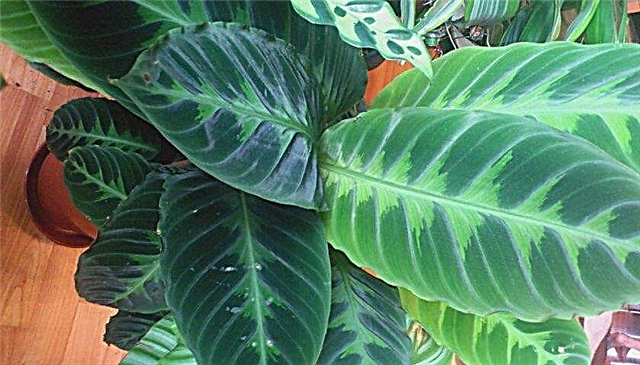
Transfer
In early spring, before the plant enters the active phase of growth, it is transplanted into a new container with a new substrate. It is recommended to transplant:
- for a young plant under the age of 3 years - annually;
- for calathea older than 3 years - every 2 years.
The transplant procedure is quite traditional and consists of the following stages:
- Choose a not too deep and wide pot, 2-3 cm in diameter larger than the old one, made of durable material.
- At the bottom of the pot lay a layer of drainage of expanded clay or pebbles, 3-5 cm high.
- On top of the drainage layer, fill the soil, which can be a store substrate intended for senpolia, or soil made independently. In the latter case, you need to mix the sheet soil with humus, peat and fine sand in a ratio of 3: 1: 1 :. The soil mixture must be decontaminated by any available method.
- Remove the flower from the old container by transshipment, clean the root system of the remaining soil, and if necessary, trim dry, rotted, damaged roots. The places of cuts should be treated with charcoal.
- Put the plant on the soil and gently fill it with the remaining soil.
- Water the flower abundantly and transfer it to a warm and bright place for adaptation.
Video: Calathea transplant
Breeding methods
At home, you can use several basic methods of breeding Calathea Varshevich: dividing the bush, cuttings and seed method.
Dividing the bush
Perennial propagation by dividing the bush is considered the fastest, simplest and most effective. The procedure should be carried out in early spring, using adults, from 3 years old, flowers:
- Remove the plant from the pot, clean the root system from soil residues.
- Using your hands, carefully separate the roots and stems so that each part has a minimum of 3 leaves and several fully formed root processes.
- Pour the nutrient mixture into equal pots from equal parts of leafy soil, sand and peat.
- Plant the divided parts of the culture, sprinkle with soil, water.
Important! When transplanting calatheas, it is forbidden to ram the soil around the roots.
Containers with seedlings should be placed in a room with a stable temperature of + 21 ... + 24 ° C and with good diffused lighting. Planted flowers will require traditional care, like adult plants.
Cuttings
Cuttings are recommended in early spring. To do this, cuttings are cut from the mother flower or use strong, healthy shoots cut off during the formation of the bush. Planting material should have a length of 9-12 cm and at least 3-5 internodes on the stem.
Further, the procedure is carried out according to this algorithm:
- Place the cuttings in a container with water or place in a moist substrate consisting of equal parts of peat and sand. Place a drainage layer on the bottom of the pot.
- Cover containers with cuttings with plastic wrap or glass.
- Place seedlings in a warm room with a temperature of + 21 ... + 24 ° C.
- Moisten the soil liberally, ventilate the sprouts daily.
 Rooting of cuttings occurs, as a rule, after 2 weeks. After they are fully strengthened, they can be planted in separate pots.
Rooting of cuttings occurs, as a rule, after 2 weeks. After they are fully strengthened, they can be planted in separate pots.Seeds
The perennial seed breeding method is considered quite complicated and troublesome. For planting, it is necessary to purchase high-quality seeds and soak them for several hours before sowing in a weak solution of potassium permanganate, and then in any solution of the growth stimulator.
Further sowing is carried out according to this scheme:
- Pour the soil into the prepared containers, which consists of 1 part of leaf soil and 0.5 part of river sand.
- Sow seeds evenly into the soil, deepening them no more than 0.5 cm.
- Pour the seed material with a thin layer of soil, moisten the surface with a spray.
- Cover containers with crops with plastic wrap to create a greenhouse effect.
- When the first shoots appear, remove the shelter.
- When 2-3 full leaves are formed, dive seedlings into separate pots with the same soil composition.

How to care immediately after buying a plant
Calathea is a delicate, fragile plant that instantly reacts to any incorrect actions while caring for it. It is especially important for the further development of the flower to give him attention after buying in a store. Immediately after the acquisition, you should not disturb the perennial - you need to give it a little time to adapt. After a few days, the tropical beauty must be transplanted into a new pot with a new substrate.
The fact is that in store conditions, kalate is kept in special substrates that are not suitable for residential cultivation. Equally important is the choice of capacity - it should be wide, but not deep, and also weighty enough so as not to tip over under the weight of numerous leaves. When planting, it is necessary to make a drainage layer that will allow moisture to not stagnate in the tank and thus prevent rotting of the root system. The flower has very fragile roots, so transplantation must be carried out very carefully and carefully so as not to damage the processes. After the transplant, the flower should be sprayed with a spray of the Zircon solution and the soil should be moistened abundantly. Further plant care includes the holding of traditional events: moisturizing, fertilizing, spraying, etc.
The flower has very fragile roots, so transplantation must be carried out very carefully and carefully so as not to damage the processes. After the transplant, the flower should be sprayed with a spray of the Zircon solution and the soil should be moistened abundantly. Further plant care includes the holding of traditional events: moisturizing, fertilizing, spraying, etc.
How to deal with diseases and possible pests
When growing calatheas, one can encounter a number of difficulties that are usually associated with improper care of perennials:
- The leaves dry out and curl into a tube. The reason is too dry air, lack of moisture or low air temperature. In this case, it is recommended to transfer the flower to a warmer place, provide it with regular watering and protect it from drafts.

- Foliage lost its brightness, turned pale. A similar problem indicates too bright lighting. It is necessary to move the flower pot in the penumbra and introduce complex fertilizers with a high nitrogen content into the soil.
- Leaves stretch in length and become thin. The defect is due to lack of sunlight. In this case, you should install the container with the plant in a lighter place, if necessary, tie up the shoots to prevent their fragility.
- The appearance of dry and brown spots on the foliage. It is the result of the negative effects of direct sunlight, which led to the formation of burns on the leaves. You need to rearrange the culture in a shaded place.

In addition, calathea can be attacked by parasites:
Fighting pests helps wiping the leaves with a soap solution or spraying with modern insecticidal drugs. As a preventive measure, it is recommended to regularly spray the leaves with warm boiled water and inspect the plant for signs of disease or parasites.
Kalatea Varshevich is highly regarded by indoor plant lovers for the originality and extraordinary color of the leaves, which resembles the plumage of fabulous birds. The tropical beauty is very demanding in care, but the most important thing when growing her is to provide the necessary level of humidity. The rest of the rules of agrotechnology of the flower are traditional, and even a beginner grower can easily cope with them.



